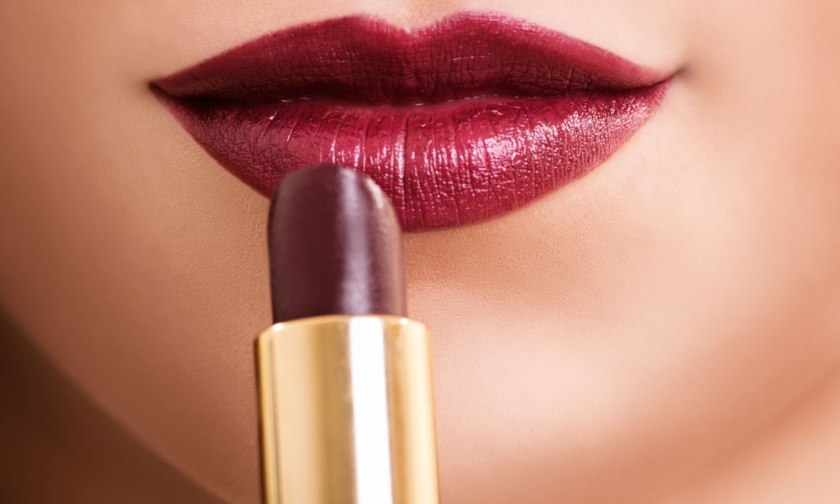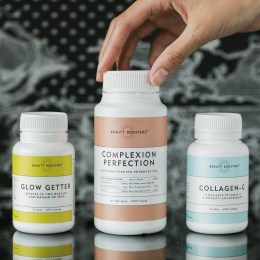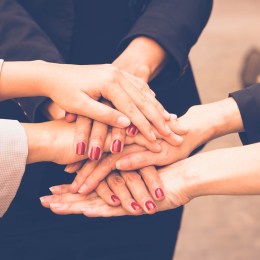Long before the GFC and its devastating fallout there was The Great Depression, whose survivors would argue was much worse in its impact on people’s quality of life in the Western world.
Elderly relatives would tell me stories of that time; for instance of several families living in the same small house and existing on oranges picked from the garden for a week.
Another tale that stuck in my mind was of a man being knocked down by a car and people rushing to him, not to offer aid but to ask if he had a job (ergo, so they could apply for it).
Such was the poverty and desperation of the Great Depression, that in most countries that started in 1929 with the stock market crash in the US on October 29, 1929 (known as Black Tuesday) and lasted until 1941.
But where is this history recap all leading?
Some say hemlines and heels rise and fall with the state of the stockmarket. But for those who really want to know how bad things are there is only one item that counts: lipstick.
The so-called Lipstick Effect was identified by financial pundits during the Great Depression. It’s the theory that when facing an economic crisis consumers will be more willing to buy less costly luxury goods.
Instead of buying expensive clothes, for example, people will buy expensive lipstick (or lipstick, anyway).
Rather than lose the spending habit, consumers simply trade down to cheaper items to cheer themselves up.
What’s more, this effect has held good in recessions of the past and in countries with different cultural traditions.
Economic analyst Dhaval Joshi, from British-based RAB Capital, reported in 2008 when the GFC first took its grip on the globe, that sales figures from the world’s big cosmetic companies – L’Oréal, Beiersdorf and Shiseido – confirmed that the Lipstick Effect returned almost immediately as the world economy headed into its first synchronised downturn since the early 1980s, with consumers increasing their spending on cosmetics even while economising on everything else.
So here’s the point we are really getting to – you are offering wellness and feelgood services but why are you not generating more wellness and feelgood product income by retailing?
We’re not just talking lipstick here(!), or even the skincare, makeup and other products you use in your treatments for use at home, but little luxuries that make clients feel like they’re giving themselves a treat, without the guilt factor of overreaching their budget.
Think of a range of merchandise appropriate to your customer base – for instance, scented candles, soaps or bath salts, nifty little gift packs (great for sampling and range and convenient for travel), aroma oils and burners or diffusers, inner beauty tonics and supplements, “athleisure” wear, cookbooks for healthy eating … where do we stop?
A clinic owner told SPA+CLINIC that she got over-excited at a beauty expo and bought a couple of dozen scented candles because their scent was so sublime and the wholesale price too compelling to resist.
But in the unscented light of day she wondered ‘What the hell am I going to do with these?!’.
She decided that she would burn one of the candles at the front desk for ambience.
Next thing the receptionist was being besieged by customers paying for treatments also wanting to buy the same candle.
The expo stash sold out within a few days and now the owners stocks the candle as a regular retail offering.
Retailing should account for roughly half your total income but the average percentage it makes for salons, spas and clinics in Australia is as little as 4-6 percent.
If this is what is happening in your business you are selling yourself – and your customers – short.
After all, if clients are not buying their home care products from you, they’re getting them somewhere else. Why are you letting likely sales walk out the door?
Just as importantly, it means you’re not giving them the benefit of your expertise in recommending the products that will do the best by their skin. It’s a bit like a doctor diagnosing a patient and sending them off to buy whatever medication they think could work at a store or online.
“Despite that fact that a strong retail business makes a salon or spa more profitable and more predictable, we still see most of them ignoring this opportunity,” says Matt Williams, managing director at Professional Beauty Solutions, distributors of Image skincare, Youngblood mineral makeup, Sunescape sunless tanning systems, Bestow inner beauty products and Dermalux Tri-Wave LED.
“Some of the most successful, profitable and saleable salons I have seen over the years have a service/retail ratio of 50/50. However, this is rare.
“The average varies, but most data suggests that retail makes up only 5-15 percent of revenue in salons, spas and clinics.”
When a customer has, say, a facial treatment they are making a sizeable investment of their time and money in their appearance and the confidence it gives them.
But as they pay and leave they are often lost in the feelgood factor and don’t think to ask what products they need to protect and enhance that investment.
If they are not guided by you, the “skin doctor”, as it were, it is more than likely that they will keep using what products are on their bathroom shelf – or buy them randomly at retail outlets or online – that at best won’t maintain and maximise results but at worst will undo all the good work of the treatment they have had, even damage the skin.
For instance, if a client has had a semi-invasive treatment such as laser or micro-needling, the skin will need to be treated with extra TLC while it heals.
You as a professional can recommend a home care regimen to help them through this phase and then what products will suit their skin from then on to see it go from strength to strength (literally!).
But the client who leaves a salon to buy products without proper guidance has little idea what to buy and is apt to make mistakes, some of them very damaging for their skin.
It’s almost too late at point of sale to start retailing after-care products.
The process should begin with the all-important consultation before a treatment, assessing clients’ needs and wants, and strategically throughout a treatment.
Remember that therapists and admin support staff are not necessarily innate salespeople, yet have incredible influence in directing clients’ purchases.
It’s natural for them to fear being seen to do a “hard sell” or being “pushy” – the usual primary reasons that are cited for our industry’s lack of retailing profits. But it doesn’t have to be like that, and with the appropriate support and education things can turn around very quickly for all concerned.
Matt Williams has found that many salon, spa and clinic staff have a negative feeling about selling.
“They don’t like the `stigma’ associated with upselling a client with take-home products,” he says.
“There also seems to be a belief in some circumstances that the client couldn’t afford to spend several hundred dollars on additional products on top of whatever service that they have just paid for.
“The block is that the therapists either don’t believe in themselves to sell or in the necessity of using professional products between treatments.
“We know that our skin care ranges and mineral cosmetics offer far superior performance to what a customer could buy over the counter at a department store or pharmacy.
“Some of the mass marketed products at best will undo all the good that has been done by a professional treatment – at worst, it will damage clients’ skin.
“Here’s the thing … when a woman or man walks into a spa, salon or clinic and is there for a treatment of any kind, one thing’s for sure: they want to look and feel wonderful. We also know that clients trust their therapists in this area.
“I think that if the therapist knew how much they were revered in the relationship, and if the therapist really understood the many benefits of the professional products available, there is no way that they would let the client leave without a sufficient amount of take-home products to maintain the health and beauty of their skin.”
Matt says in these circumstances there needs to be a radical shift in how they view their business and retailing – and this applies to everyone from the owner/manager right through to the most junior employee.
“Sales is not a dirty word and we want to show salons how they can offer their clients more,” Matt adds.
“We want our salons to be the most profitable in the industry and we know what is holding so many of them back.”
Retailing today requires new thought. It requires innovation. It requires doing things differently because consumer buying habits are changing rapidly.
The future is now. Embrace it. We have no choice, so we may as well get excited and enjoy the thrill of the ride.




